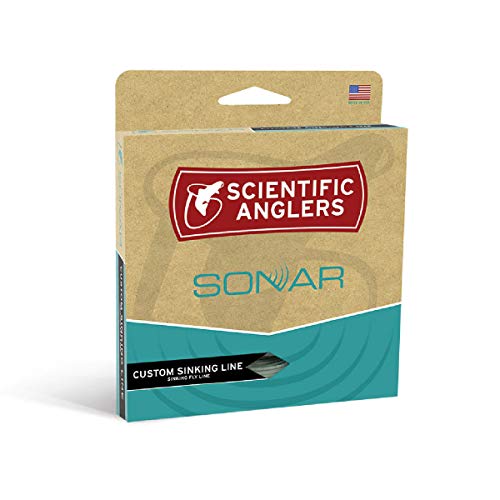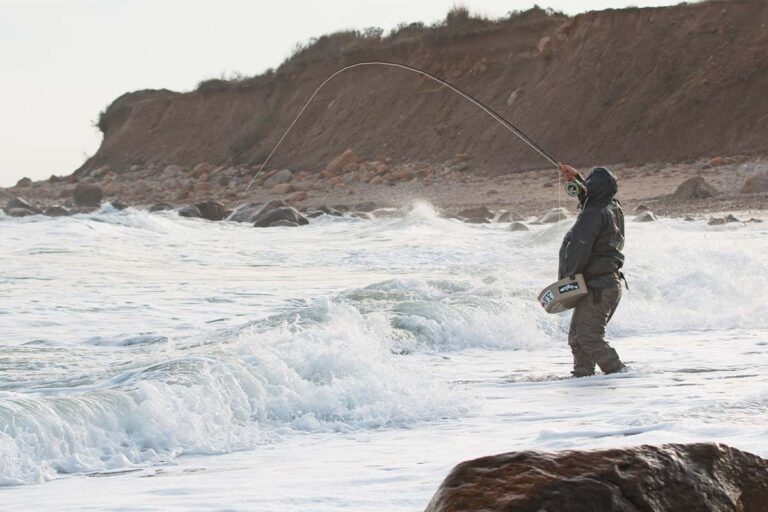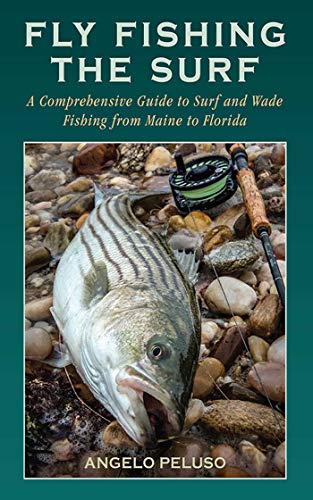To read surf conditions for fishing, observe wave height, direction, and break patterns to determine where fish are likely to gather. In addition, take note of water temperature and clarity, as these factors can also impact fish behavior and feeding patterns.
Understanding how surf conditions affect fish movements will increase your chances of a successful fishing trip.

Credit: www.gameandfishmag.com
Understanding The Importance Of Surf Conditions
Surf conditions play a critical role in determining the success of your fishing trip. By understanding and reading the surf conditions correctly, you can greatly enhance your chances of catching fish. The key to a productive fishing day lies not only in the location but also in comprehending the impact of surf conditions on fish behavior.
This section will explore why surf conditions matter for fishing success and the role they play in fish behavior.
Why Surf Conditions Matter For Fishing Success
Surf conditions hold valuable clues about the underwater environment, indicating the presence and availability of fish. Here are some reasons why understanding surf conditions can significantly impact your fishing success:
- Wave height and frequency: Waves crashing onto the shore disturb the water, attracting fish. By observing the height and frequency of waves, you can gauge the level of fish activity in an area.
- Water clarity: Clear water is vital for successful fishing. It allows fish to spot your bait or lure easily. Surf conditions, such as wave action and offshore winds, can affect water clarity. Understanding these conditions will help you choose the right spot to catch more fish.
- Water temperature: Different fish species have specific temperature preferences. Surf conditions like wind patterns, tides, and currents significantly impact water temperature, influencing fish behavior and their feeding patterns.
- Nutrient concentration: The surf zone often holds a wealth of nutrients, attracting baitfish and larger predatory fish. Understanding the presence and movement of nutrient-rich waters is crucial for locating fish and increasing your chances of a successful catch.
The Role Of Surf Conditions In Fish Behavior
Surf conditions directly influence fish behavior, which ultimately determines their likelihood of biting. Here’s how surf conditions impact fish behavior:
- Wave action and turbulence: Strong wave action, turbulence, and crashing waves disorient fish, making them more active and seeking shelter in calmer waters. Understanding this behavior can help you identify prime fishing areas.
- Currents: Surf conditions create various currents, such as rip currents and undertows, which impact fish movement. Fish often gather near these currents, as they carry food and provide shelter. Recognizing the presence and behavior of currents can lead you to fish-rich spots.
- Shelter and structure: Surf conditions help create essential fish habitats, such as sandbars, rocks, and submerged structures. These areas provide shelter for fish, as well as serve as hunting grounds for predators. Identifying these structures can lead to successful fishing.
- Feeding opportunities: Certain surf conditions, like strong washouts and tidal movements, create an abundance of food sources for fish. Understanding the correlation between surf conditions and feeding patterns can help you anticipate when fish are most likely to bite.
By comprehending the importance of surf conditions and their direct impact on fish behavior, you can make informed decisions about where and when to fish. Paying attention to wave height, water clarity and temperature, nutrient concentration, as well as understanding fish behavior related to surf conditions, will greatly enhance your fishing success.
Essential Gear And Techniques For Surf Fishing
Surf fishing can be an exhilarating experience, but it takes skill and knowledge to read surf conditions for optimal fishing success. One essential aspect of surf fishing is having the right gear and techniques in place. In this section, we will delve into the key factors to consider when selecting your fishing rod, fishing line and hooks, as well as bait and lure options for different surf conditions.
Selecting The Right Fishing Rod For Surf Fishing
When it comes to surf fishing, your choice of fishing rod plays a crucial role in your overall performance. Here are the key points to consider:
- Rod length: Opt for a longer fishing rod, typically between 9 to 12 feet, to cast your line further out into the surf.
- Power and action: Choose a rod with a medium to heavy power rating and fast action. This will provide the necessary strength to handle larger fish and enable quick hook sets.
- Material: Look for a fishing rod made from a durable and lightweight material such as graphite or fiberglass.
- Number of pieces: A two-piece or multi-piece rod offers convenience for transportation and storage.
Choosing The Best Fishing Line And Hooks For Surf Fishing
Having the right fishing line and hooks is crucial for success in surf fishing. Consider the following points:
- Fishing line strength: Use a strong fishing line with a test rating between 20 to 30 pounds to handle the challenging surf conditions and potential large catches.
- Line material: Monofilament or braided lines are popular choices for surf fishing due to their high strength and abrasion resistance.
- Hook size and style: Select hooks based on the targeted fish species and prevailing surf conditions. Size 1/0 to 4/0 hooks are commonly used for surf fishing, with circle hooks being a popular choice for catch and release purposes.
- Hook point: Ensure your hooks have sharp and well-honed points for effective hook sets.
Bait And Lure Selection For Different Surf Conditions
The selection of bait and lures can greatly impact your surf fishing results. Consider the following tips:
- Natural baits: Fresh or frozen natural baits like sand fleas, shrimp, mullet, or clams are effective for attracting a variety of surf-dwelling fish species.
- Artificial lures: Use lures that mimic the baitfish commonly found in the surf, such as spoons, jigs, soft plastics, or topwater plugs.
- Surf conditions: Adjust your bait or lure selection based on the current surf conditions. For rough conditions with higher waves and turbidity, brightly colored lures or cut bait chunks can be more effective in attracting fish.
Now that you have a solid understanding of the essential gear and techniques for surf fishing, you’ll be better prepared to tackle the surf and reel in some impressive catches. With the right fishing rod, line, hooks, and bait selection, you’re well on your way to a successful surf fishing adventure.
So grab your gear and head out to the beach, the next big catch could be just a cast away!
Strategies For Mastering Surf Conditions
Surf conditions play a crucial role in determining your success as a fishing enthusiast. Understanding how to read and analyze surf reports, identify the best fishing spots, and adapt your fishing techniques can greatly enhance your chances of landing a big catch.
Here are some strategies to help you master surf conditions:
Reading And Analyzing Surf Reports
Surf reports provide valuable insights into the current conditions of the ocean, enabling you to make informed decisions about when and where to fish. Consider the following key points:
- Wave height: Pay attention to the wave height, as this factor can greatly impact the fishing experience. Higher waves may make it challenging to cast your line effectively, while smaller waves can create calmer conditions for fishing.
- Wave period: The period between successive waves is also crucial to consider. Longer wave periods typically indicate more consistent and stable conditions, providing a better opportunity for successful fishing.
- Wind direction: Check the wind direction as it can influence the movement and behavior of fish. Crosswinds or onshore winds can bring baitfish closer to the shore, attracting predatory fish and increasing your chances of a catch.
- Tidal movement: Take note of the tidal movement in relation to your fishing spot. Certain fish species are more active during specific tidal phases, so aligning your fishing times with these periods can significantly improve your chances of success.
Identifying The Best Fishing Spots In Different Surf Conditions
Not all areas of a coastline are equally productive for fishing. To identify the best spots based on surf conditions, keep these tips in mind:
- Sandbars and troughs: Look for sandbars and troughs along the beach, as they create favorable conditions for fish to gather and hunt for food. These natural structures often provide shelter and serve as feeding grounds for various fish species.
- Currents and rips: Pay attention to the movement of water and identify any visible currents or rips. These areas often attract schools of fish seeking an easy meal, making them prime fishing spots.
- Structures and obstacles: Keep an eye out for structures such as rocks, jetties, or piers, as they can create favorable habitats for fish. These structures offer shelter, food sources, and ambush points, making them hotspots for anglers.
Adapting Your Fishing Techniques To Changing Surf Conditions
Once you’ve selected a fishing spot based on the surf conditions, it’s essential to adapt your fishing techniques accordingly. Consider the following:
- Casting distance: Adjust your casting distance based on the wave height and surf conditions. In rougher waters, casting closer to shore may yield better results, while calmer conditions allow for longer casts into deeper waters.
- Bait presentation: Vary your bait presentation techniques to suit the current conditions. In choppier waters, using larger, more visible bait may attract fish, while in calmer conditions, finesse techniques with smaller, more subtle bait work better.
- Retrieval speed: Experiment with the speed of your retrieve. In faster currents, a quicker retrieve may mimic the natural movement of prey fish, enticing predatory species to strike. Slower retrieves are effective in calmer waters to entice fish in a more passive feeding mood.
By reading and analyzing surf reports, identifying the best fishing spots, and adapting your fishing techniques, you can optimize your chances of success in various surf conditions. Remember to stay vigilant and observant, making adjustments as needed to maximize your fishing experience.
Tight lines and happy fishing!
Conclusion
When it comes to fishing, understanding surf conditions is crucial for success. By carefully observing the waves, tides, and weather patterns, anglers can determine the best times and spots for casting their lines. Waves that break close to shore create ideal fishing areas, while choppy waters may indicate challenging conditions.
Additionally, paying attention to the tide can dictate where fish may be feeding and increase the chances of a successful catch. Weather conditions such as wind and sunlight can also affect fish behavior, so adjusting techniques accordingly is essential. By taking the time to read surf conditions and adapt their strategies, fishermen can optimize their chances of a fruitful day on the water.
So, next time you head out for a fishing excursion, don’t forget to analyze the surf conditions and let nature guide your success. Happy fishing!





